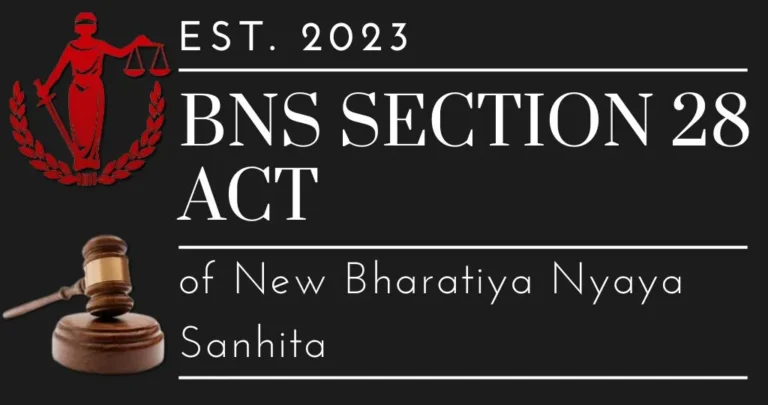
Legal Consequences of Providing False Information: An Overview of Section 212 of Bharatiya Nyaya Sanhita, 2023
Legal Penalties for Giving Misleading Information: An Overview of Section 212 of Bharatiya Nyaya Sanhita, 2023
Bharatiya Nyaya Sanhita, 2023 (BNS), enacted on July 1, 2024, in lieu of the Indian Penal Code, addresses different crimes and their legal implications. Section 212 of BNS addresses specifically the offense of giving false information to a public servant, which is a criminal act. The section defines the legal obligations of individuals who are legally required to provide correct information and the punishments for those who provide false information knowingly.
Section 212: Providing False Information
For More Updates & Regular Notes Join Our Whats App Group (https://chat.whatsapp.com/DkucckgAEJbCtXwXr2yIt0) and Telegram Group ( https://t.me/legalmaestroeducators ) contact@legalmaestros.com.
Section 212 addresses the case of an individual who is legally obligated to provide information on any topic to a public official and knowingly provides false information. It prescribes the punishment for such acts and the circumstances under which the offense becomes aggravated.
Punishments for Providing False Information
Under Section 212, there are two types of punishments depending on the nature of the false information:
General False Information (Clause a): Whoever gives false information on a general matter when he is legally bound to provide truthful information is liable for:
Imprisonment for a term which may extend to six months, or
A fine extending to five thousand rupees, or
Both imprisonment and fine.
Example: An individual is obligated to report the facts of an accident to the police. Rather than providing the accurate facts, they deliberately mislead the police by providing false information regarding how the accident happened. This individual would be culpable under this section and could be liable for the above penalties.
False Information Relating to an Offense (Clause b): If the false information relates to the commission of an offense, the prevention of an offense, or the apprehension of an offender, the punishment is more severe. In this case, the person can be punished with:
For More Updates & Regular Notes Join Our Whats App Group (https://chat.whatsapp.com/DkucckgAEJbCtXwXr2yIt0) and Telegram Group ( https://t.me/legalmaestroeducators )
Imprisonment of either type (simple or severe) for a period not exceeding two years, or
A fine, or
Both imprisonment and fine.
Example: If an individual has knowledge of an imminent theft in a neighborhood and is bound by law to report it to the police but gives false information with the intention of deflecting the police’s attention, they would be guilty of a more severe crime. The punishment could involve a two-year jail sentence, depending on the gravity of the false information.
Illustrations of Section 212
To see how Section 212 works, let’s go through the examples given in the law:
Illustration (a): Here, a landowner A is aware of a murder that took place on his land. But, rather than reporting the murder to the Magistrate, A purposely provides false information and states that the death resulted from a snake bite. Because A knowingly misinformed the authorities regarding the cause of death, he would be culpable under Section 212. Punishment may entail imprisonment, a fine, or both.
Explanation: In this case, landowner A had a legal duty to report the truth but, instead, made false representation to the authorities. The intent to make a false representation renders the offense punishable.
Illustration (b): A village constable, A, observes a bunch of strangers who are passing through the village and plan to stage a robbery in the residence of Z, who is a wealthy merchant in an adjacent town. But rather than informing the police at the nearest station about the truth, A provides a false report, indicating that the gang is going in a different direction to rob another town. In giving this false report, A obstructs the police from taking prompt action to prevent the crime and hence is guilty under Section 212.
Explanation: In this case, the watchman A is bound by law to report the facts correctly. By giving false information, A not only hinders justice but also puts others in danger, and therefore the offense becomes more serious.
Explanation to Section 212
The definition in Section 212 says that, for the purpose of this section and Section 211 (regarding false charges), “offense” means any act that, if done in India, would be an offense under specified sections of the Bharatiya Nyaya Sanhita. These include major offenses like attempt to murder, causing grievous hurt, and others specified under the law.
Moreover, the definition of “offender” also encompasses any person who is alleged to have committed such offenses. This extends the ambit of Section 212 to cover offenses both within and outside India, provided they are established as punishable offenses under Indian law.
Conclusion
Section 212 of the Bharatiya Nyaya Sanhita, 2023 places special significance on furnishing true information to public servants, especially in the context of offenses. It imposes definite sanctions on those who knowingly give false information, based on the seriousness and nature of the falsehood. Whether the information is about a general issue or an offense, the law makes sure that deceiving authorities is a serious crime, with sanctions that correspond to the seriousness of the false information given.
The examples given in the law serve to explain actual situations in which such false information would have dire implications. Whether it is the deliberate concealment of a murder or deceiving the police regarding an intended robbery, Section 212 makes sure that the people responsible for giving false information are brought to book according to the law.






